Science tells us that soil is essential for plants due to the nutrients it contains. But are you aware that there are actually houseplants that can grow right from small containers of water? While they shouldn’t be kept in them for their entire lifespan, these plants can grow happily on containers of water.
So which plants are they, and should you add them to your indoor garden space? There are plenty of options to pick from, regardless if you want something with blooms, or something that just adds some extra greenery indoors.
We’ve compiled a full list of plants that you can grow with just a vase and some water. Keep reading to find out what types of plants they are, and if they’ll make a good fit for your indoor garden!
African Violet
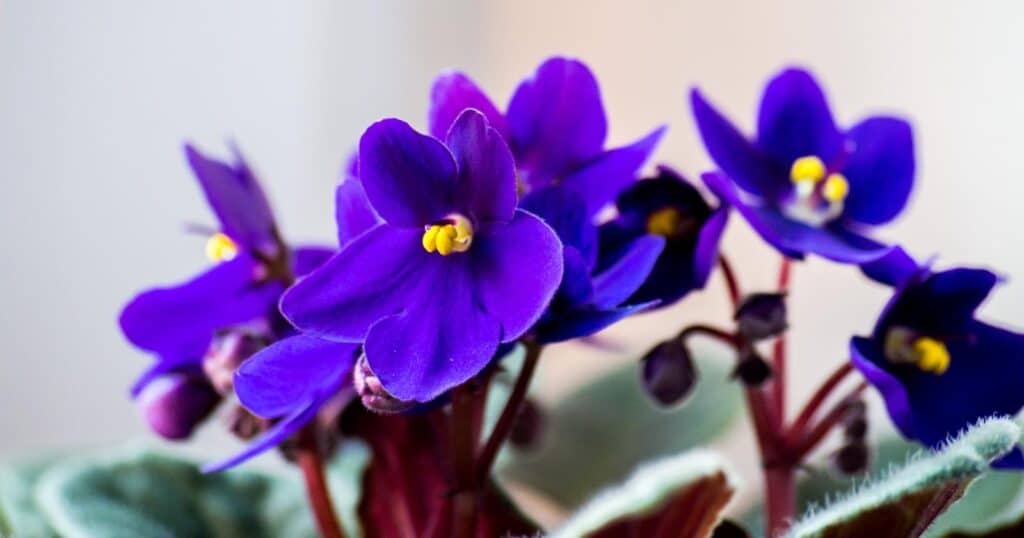
Scientific Name: Saintpaulia
- Plant Type: Perennial
- Geographic Origin: Tanzania
- Plant Size: 2 to 6 inches tall
- Sun Exposure: Partial, indirect sunlight
- Plant Zone: Indoors only
African violets are beautiful indoor houseplants that you can grow in water. The velvety leaves love indirect sunlight, so they’ll brighten up dimmer areas of your home. You can cut off any young leaves within an inch or two of the stem. Don’t let the leaves get in the water — you should submerge only the stem. Roots form in just a month.
Alocasia
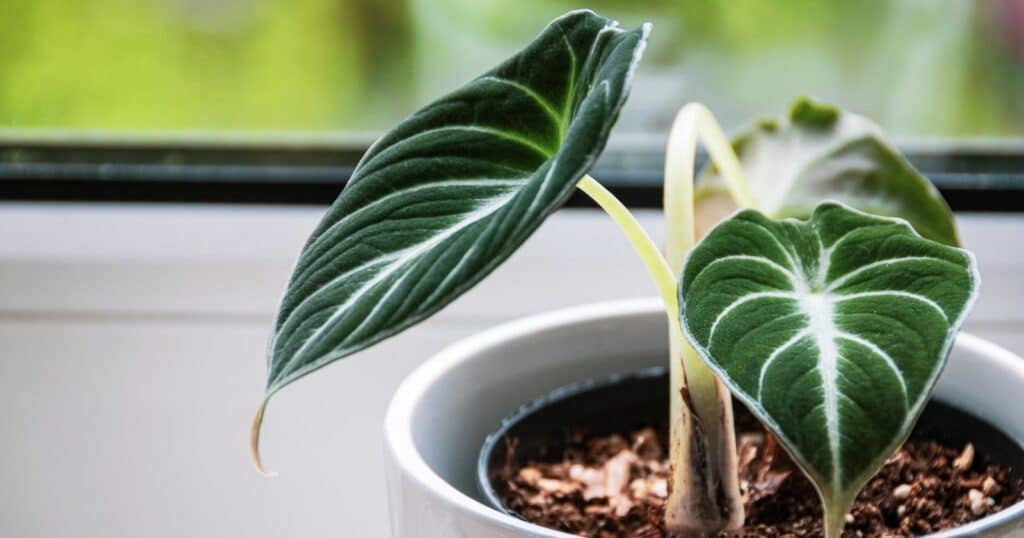
Scientific Name: Alocasia zebrina
- Plant Type: Perennial
- Geographic Origin: Asia and eastern Australia
- Plant Size: 2 to 6 feet tall
- Sun Exposure: Partial shade to partial sun
- Plant Zone: 8 to 9
Whether transplanting from soil to water or growing a plant from a cutting, Alocasia love water and can thrive in a complete water environment. Dust off any soil if transplanting or use a clean cut to begin propagating. Ensure other essential conditions are kept, such as avoiding direct sunlight, which may burn its leaves.
Arrowhead Plant
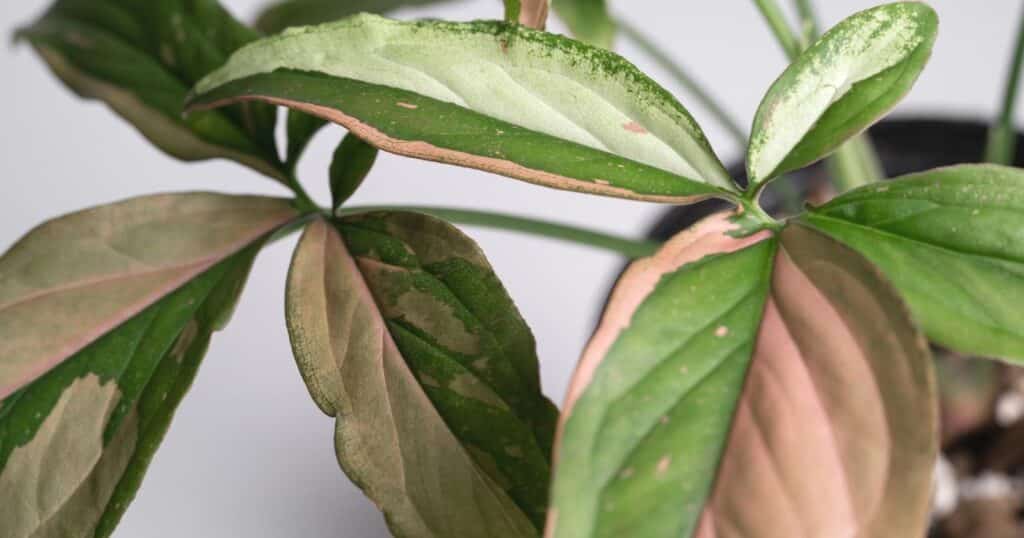
Scientific Name: Syngonium podophyllum
- Plant Type: Perennial
- Geographic Origin: South America
- Plant Size: 3 feet tall
- Sun Exposure: Partial shade
- Plant Zone: 10 to 11
Arrowhead plants can grow roots in water, but they require specific conditions. Use a large glass vessel filled with filtered and non-chlorinated water and place the arrowhead cuttings upright, so the water comes up high but doesn’t touch the leaves. At least 2-3 nodes should be completely submerged in water for the best results.
Baby’s Tears
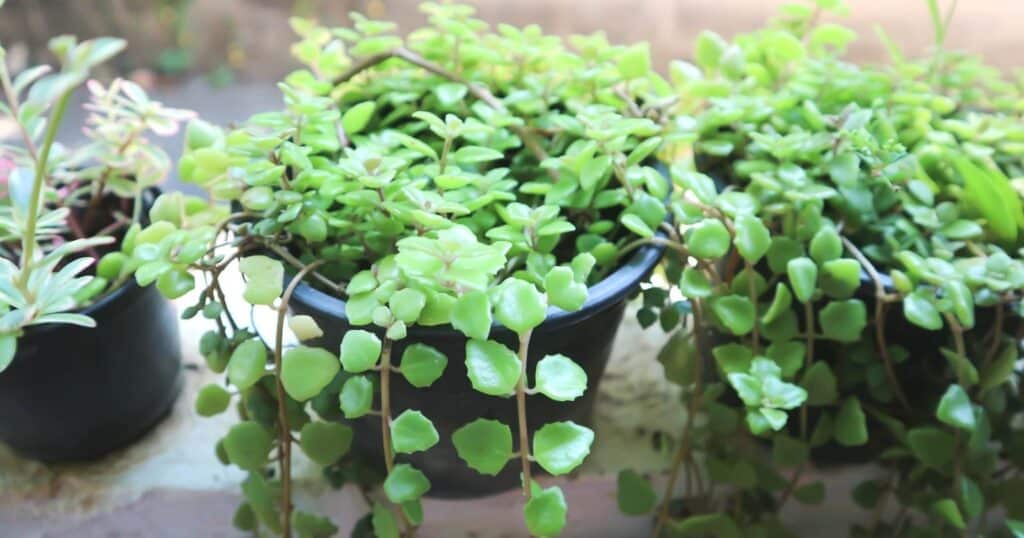
Scientific Name: Pilea depressa
- Plant Type: Perennial
- Geographic Origin: Europe
- Plant Size: 4 inches tall, 36 inches wide
- Sun Exposure: Indirect sunlight
- Plant Zone: 9 to 11
The tiny round leaves of Baby’s Tears add a pop of greenery to your home. They grow densely and look like a mat growing out of your jar or vase. It looks like moss but has stems growing below the surface.
Find a jar with a broad base so that it can grow over the edges of the vessel. It’s best to change the water weekly to make sure that it keeps growing without the leaves rotting.
Begonia
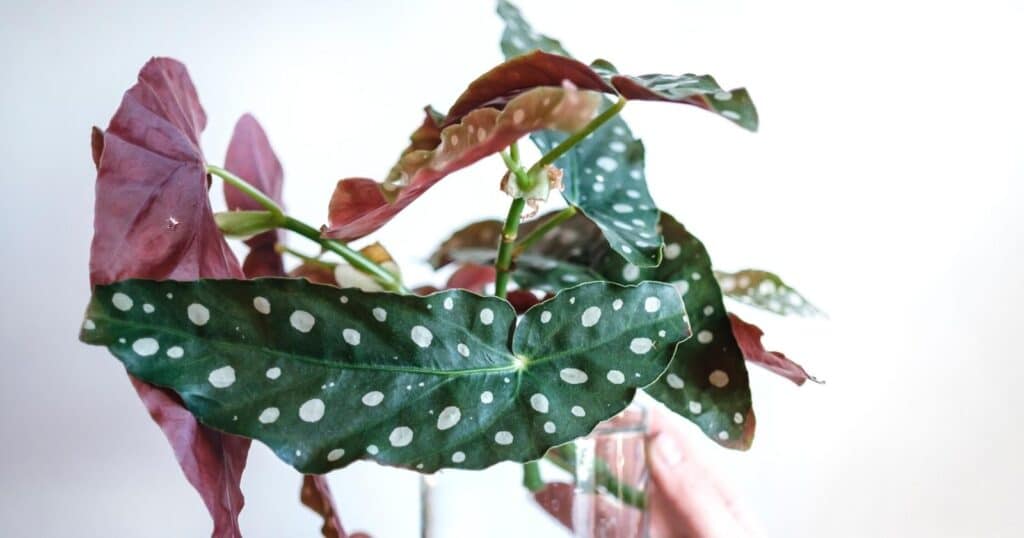
Scientific Name: Begonia
- Plant Type: Perennial or annual
- Geographic Origin: Central America
- Plant Size: 12 to 18 inches tall, width varies
- Sun Exposure: Partial to full shade
- Plant Zone: 10 to 11
Begonias are beautiful plants with thick stems, making them hardy when growing in water. The knobby leaf node ensures it will form roots quickly. It might take several months for the roots to be strong enough to support a whole plant. You’ll need to change the water frequently to prevent bacterial growth during that time.
Caladium
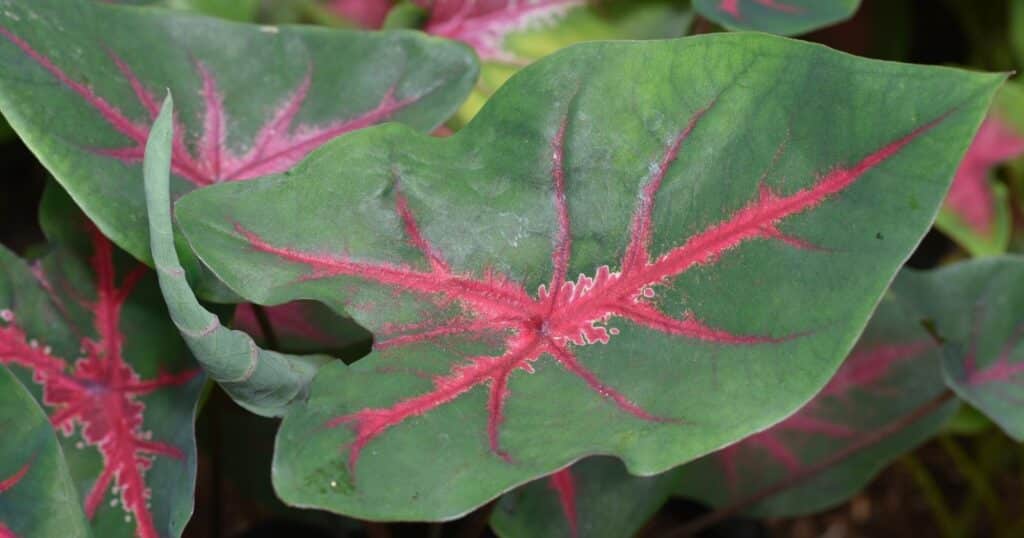
Scientific Name: Caladium
- Plant Type: Perennial
- Geographic Origin: South and Central America
- Plant Size: 10 to 30 inches tall
- Sun Exposure: Full sun
- Plant Zone: 9 to 11
A group of flowering plants, Caladium encompasses interestingly named species like the heart of Jesus and angel wings. They have no frost tolerance, which means growing them indoors is a great way to prevent accidental exposure.
When growing Caladium from a leaf that takes root, make sure to use river water or tap water, provided it has been boiled first and then cooled down to remove the chlorine.
Chinese Evergreen
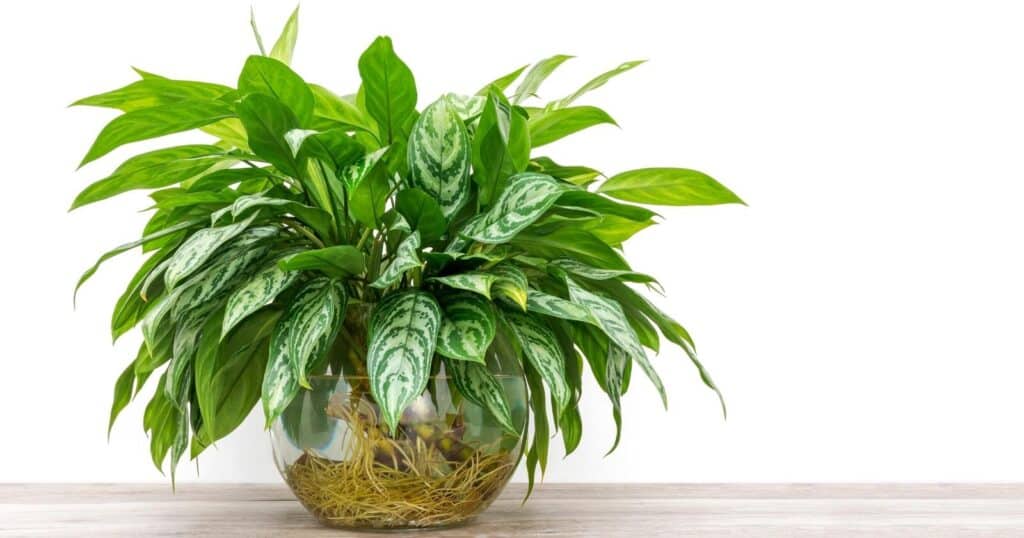
Scientific Name: Aglaonema
- Plant Type: Perennial
- Geographic Origin: Philippines
- Plant Size: 1 to 3 feet tall and wide
- Sun Exposure: Partial shade
- Plant Zone: 10 to 11
The beautiful speckled leaves of the Chinese evergreen look beautiful inside. There are many variations, with different sizes, patterns, and colors of leaves. Since the plant has such thick stems, it can thrive in water.
Trying to get a mature plant’s roots to adjust to water after growing in the soil will kill the plant. It’s better to cut part of the stem of a plant you like to root in water. You can even take branches of two different varieties and let them grow in the same vase. The contrast of colors and patterns can look like a gorgeous arrangement.
Coleus
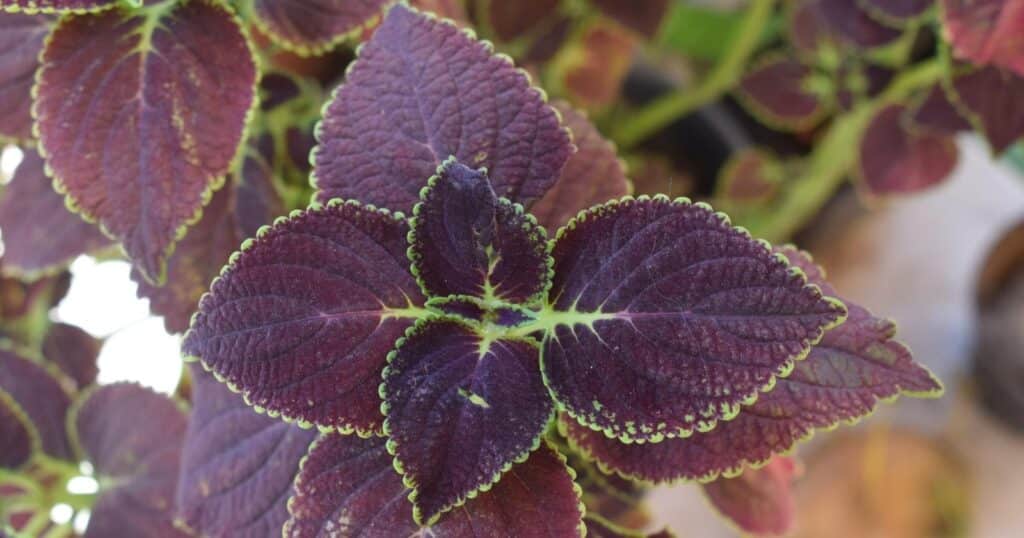
Scientific Name: Plectranthus scutellarioides
- Plant Type: Perennial
- Geographic Origin: Asia, Australia
- Plant Size: 0.5 to 3 feet tall
- Sun Exposure: Partial shade
- Plant Zone: 10 to 11
Coleus encompasses over 60 different varieties of plants in a variety of colors and shapes. They do best with minimal interference and enjoy a sunny window sill.
Beginning with a 6-inch cutting stripped of its lower leaves, You can propagate coleus in water, and once roots have developed, you can keep it in water if a compost tea is occasionally added for nutrients.
Croton
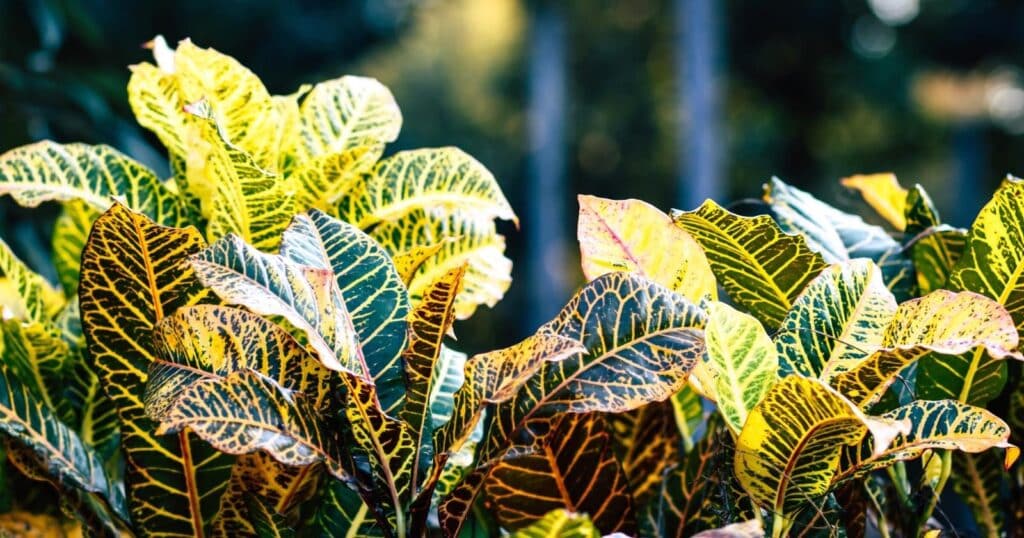
Scientific Name: Codiaeum variegatum
- Plant Type: Perennial
- Geographic Origin: Malaysia
- Plant Size: Up to 10 feet tall
- Sun Exposure: Partial shade to full sun
- Plant Zone: 9 to 11
The croton plant or garden croton is an excellent addition to an indoor garden and can be grown in water. Leaves can be started as blind cuts and placed in water to grow, or the stem can be cut provided it includes another bud to help the roots along.
If left in water full time, growth may be stunted, but it can survive.
Dumbcane
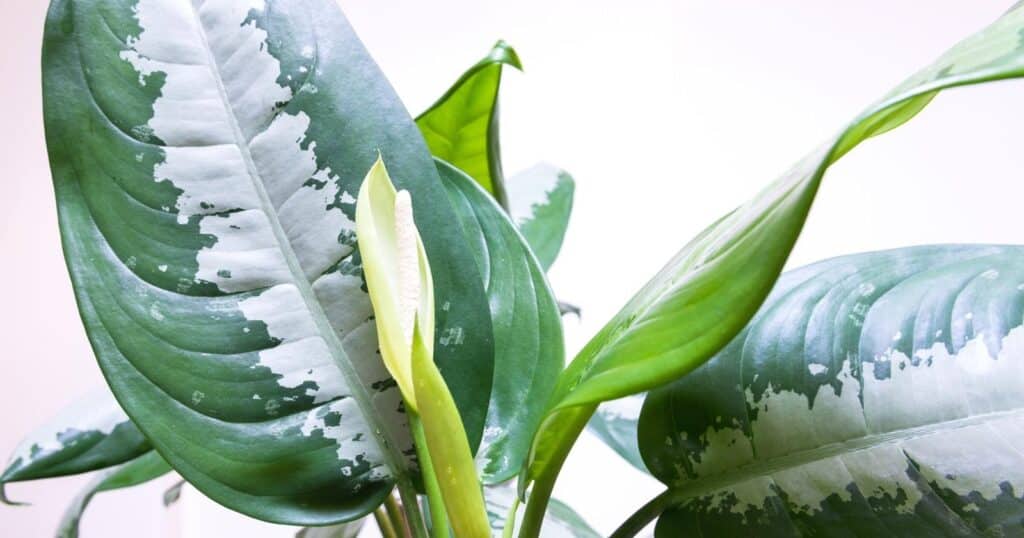
Scientific Name: Dieffenbachia
- Plant Type: Perennial
- Geographic Origin:
- Plant Size: 3 to 10 feet tall, 2 to 3 feet wide
- Sun Exposure: Full sun
- Plant Zone: 10 to 12
Dumbcane is a plant with large, stunning leaves — yellow in the center with dark green edges. This plant will add beauty to your indoor garden. The thick stems make it hardy enough to live in water alone, mainly because it can withstand various light conditions.
Cut a long stem from a parent plant to root in water. You don’t want to cut anything from the center stems of the mature plant, though. It’s better to take a branch and cut it clean with a knife to ensure a fresh start for the roof system.
English Ivy
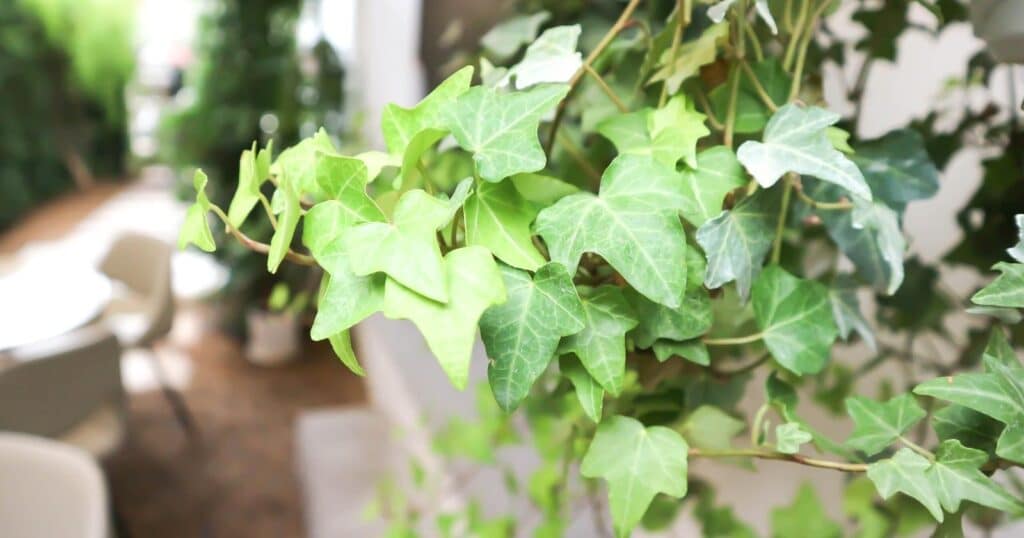
Scientific Name: Hedera helix
- Plant Type: Perennial
- Geographic Origin: Europe, Asia, and Africa
- Plant Size: 8 inches to 50 feet tall if left to climb
- Sun Exposure: Full sun to full shade
- Plant Zone: 4 to 13
English ivy is one plant you might prefer to grow indoors instead of outdoors. When these plants are outside in soil, the vines grow quickly and can suffocate surrounding plants. The leaves are so beautiful that people wanted to grow them in more restricted conditions.
It turns out that growing English ivy in a glass of water gives you the best of both worlds. You get unique green leaves without putting your other plants at risk. Since the vines still multiply, you might want to find a variant with smaller leaves and stems that fit better in a vase.
Fiddle Leaf Fig
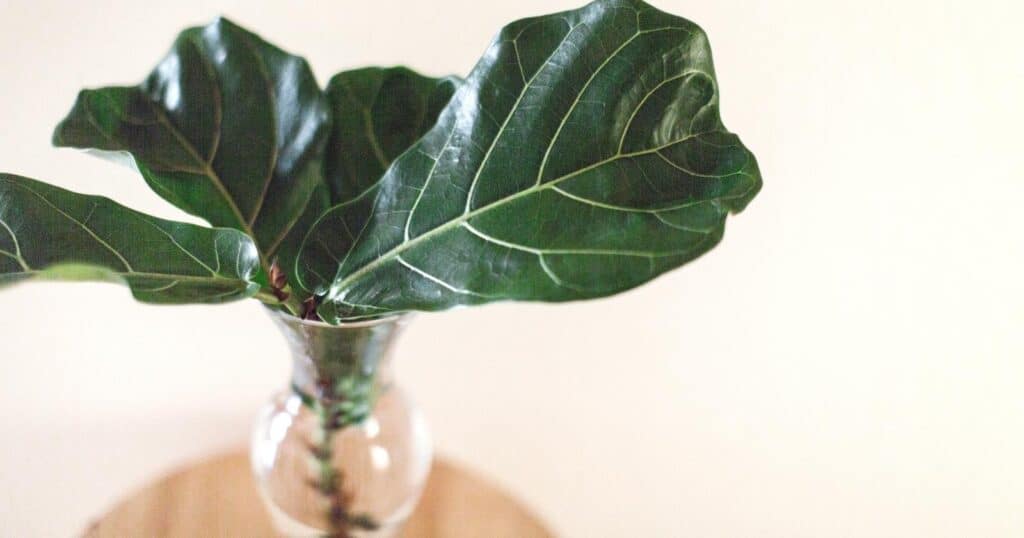
Scientific Name: Ficus lyrata
- Plant Type: Annual or perennial
- Geographic Origin: Africa
- Plant Size: 6 feet tall
- Sun Exposure: Full sun
- Plant Zone: 9 to 11
The fiddle leaf fig is a popular houseplant because it’s beautiful and grows large without much fuss. The leaves, shaped like violins, give this plant its name. It prefers warm and wet conditions, so growing it in water is ideal.
Roots will appear about four weeks after putting a stem in water to propagate. Keep it out of direct sunlight so you don’t burn the leaves, and make sure you give it plenty of water.
Geranium
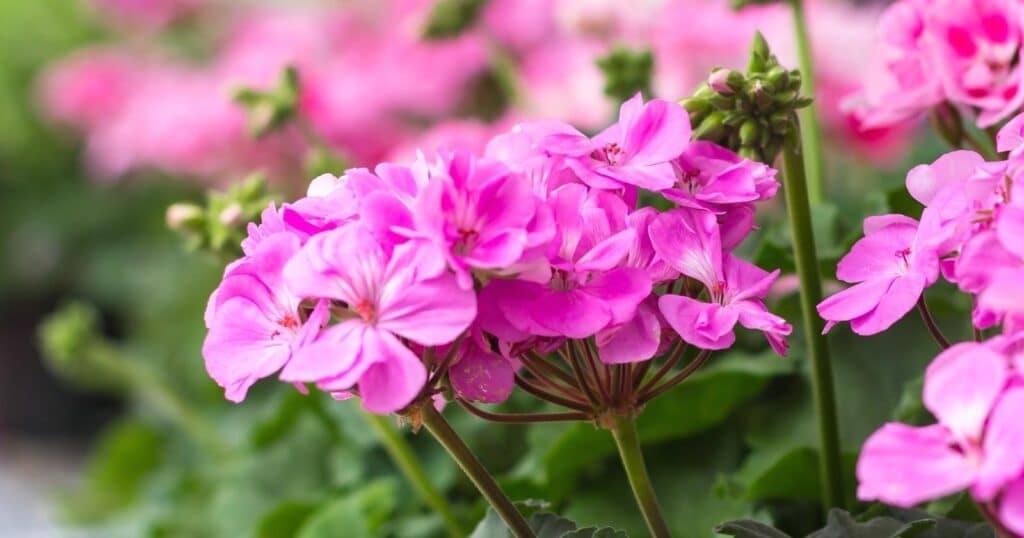
Scientific Name: Pelargonium species
- Plant Type: Annual
- Geographic Origin: Eastern part of the Mediterranean region
- Plant Size: 4 to 48 inches tall, up to 2 feet wide
- Sun Exposure: Partial shade
- Plant Zone: 10 to 11
Geraniums can be divided into six different varieties and grow in a variety of color combinations, including white, red, purple, and black. They make hearty houseplants and, if grown in water, will continue growing without soil, provided the water is changed every few weeks.
Impatiens
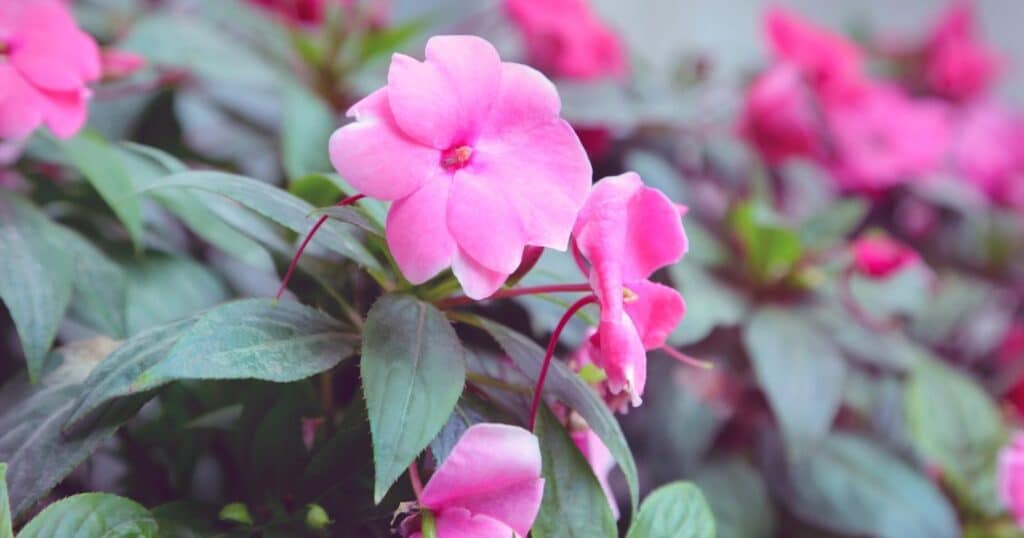
Scientific Name: Impatiens
- Plant Type: Annual
- Geographic Origin: Asia
- Plant Size: 1 to 3 feet tall, width varies
- Sun Exposure: Partial shade to full sun
- Plant Zone: 2 to 11
These plants love shady gardens but need a lot of moisture to flourish, making them ideal for growing in water! They often grow in ponds, so propagating a stem in a glass of water is a simple choice. They’ll root in several months, so you can either plant them in the shade or let them brighten up the dark corners of your interior.
Inchplant
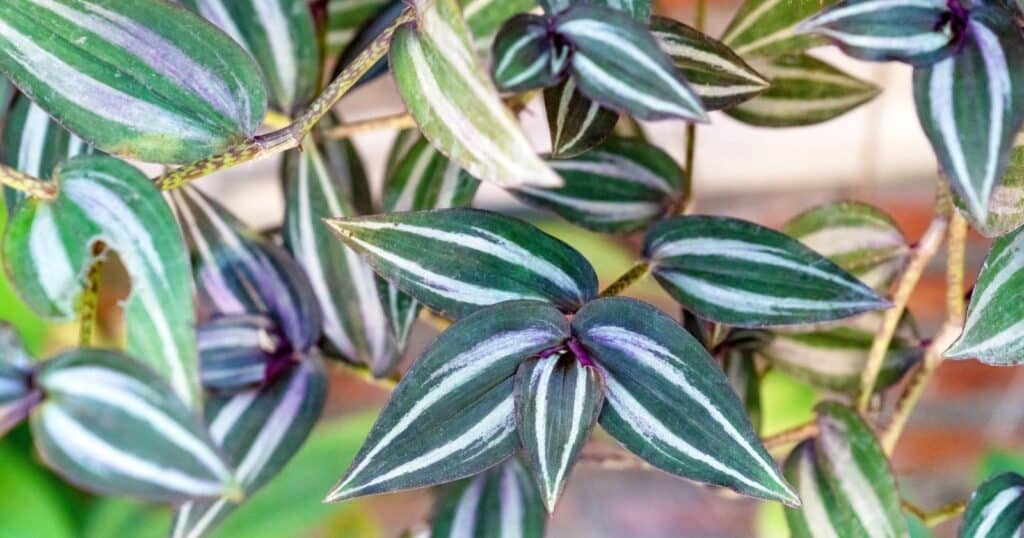
Scientific Name: Tradescantia zebrina
- Plant Type: Perennial
- Geographic Origin: Mexico
- Plant Size: 14 inches tall
- Sun Exposure: Full to partial sun
- Plant Zone: 9 to 12
The most common houseplant version of Inchplant has a light purple tint with stripes. If you’re going for unique plants in your home, this is one that will indeed mix up all the greenery of other options!
It’s a trailing plant, so the stem will continue to grow and coil out from the vase. Make sure to remove any leaves from the portion of the stem that remains underwater.
Lavender
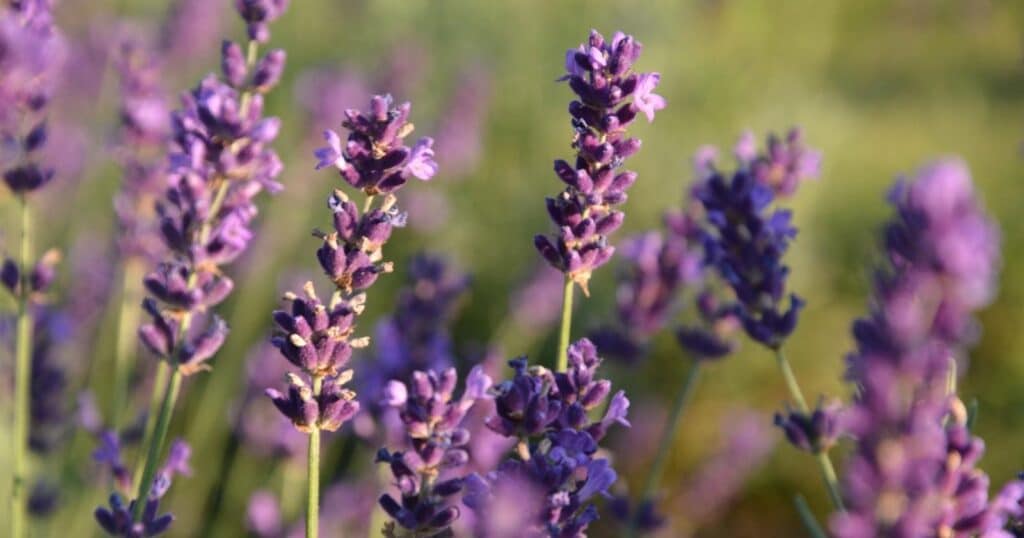
Scientific Name: Lavandula
- Plant Type: Perennial
- Geographic Origin: Europe
- Plant Size: 12 inches to 3 feet tall
- Sun Exposure: Full sun
- Plant Zone: 5 to 9
When you cut the stem off a mature lavender plant, ensure to remove the bottom leaves and keep them in two inches of water. Roots will form in just a few weeks. Regularly freshen the room temperature water so that the roots can get stronger in time.
Lucky Bamboo
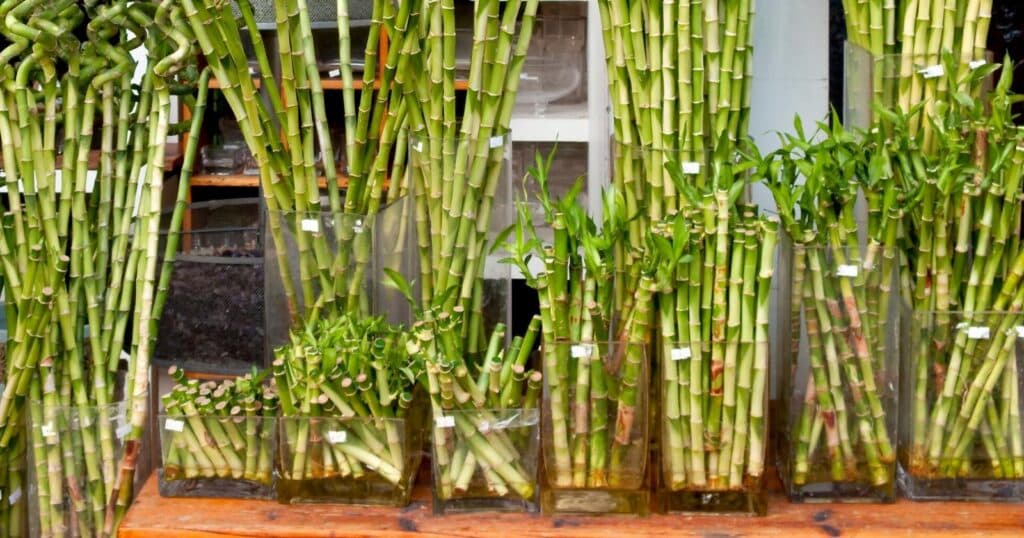
Scientific Name: Dracaena sanderiana
- Plant Type: Perennial
- Geographic Origin: Southeast Asia
- Plant Size: 1 to 3 feet tall
- Sun Exposure: Partial shade
- Plant Zone: 10 to 11
With “lucky” in front of the name, why wouldn’t you want this plant in your home? Many people like having bamboo in the yard, but it can quickly expand beyond where you’ve planted it and take over your yard — and the neighbor’s! Growing a stalk in a glass jar is a great way to enjoy the simple beauty of this plant while ensuring it stays contained.
The stalks are so tough that you don’t have to worry about them dying in the water. It doesn’t even have a specific light requirement because it can make do with anything. Direct sunlight can burn the leaves as they appear, but otherwise, low light is fine. If you notice the green color fading, move it into indirect sunlight. Otherwise, this is an excellent plant for kitchens, desks, and tables.
Moses-In-the-Cradle
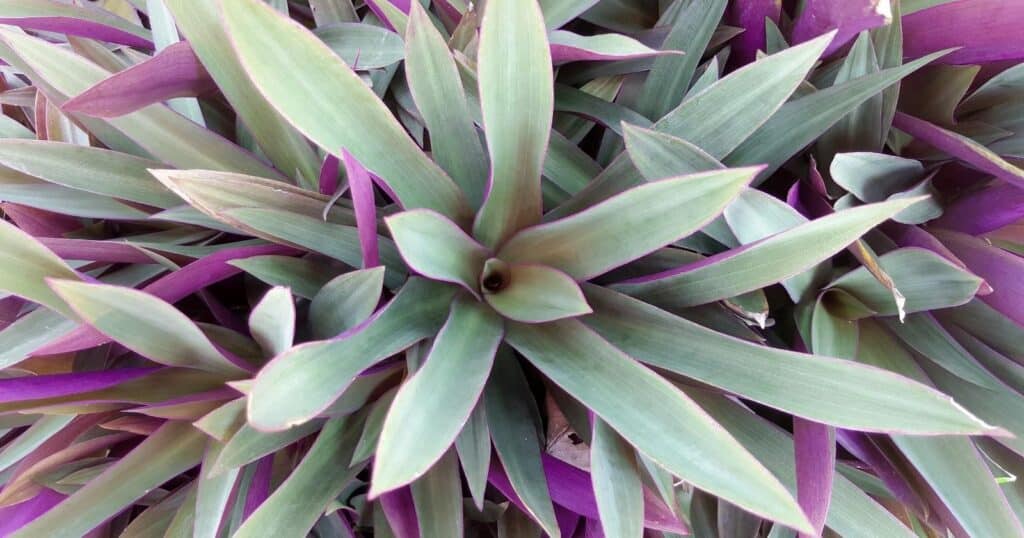
Scientific Name: Rhoeo spathacea
- Plant Type: Perennial
- Geographic Origin: Belize, Guatemala, and southern Mexico
- Plant Size: 15 to 18 inches tall
- Sun Exposure: Partial to full shade
- Plant Zone: 9 to 11
Also known as a dwarf oyster plant, Moses-in-the-Cradle do best in warm and tropical climates. This drought-tolerant plant only takes a little attention once a week and doesn’t require much space, rarely growing bigger than 18 inches.
To propagate a plant, take or cut a 4-inch section of stem from a healthy and mature plant, removing the lower leaves. Place the cutting in a jar of water, and after a few weeks, the new roots should appear. It can be left in water or replanted in soil.
Moth Orchid
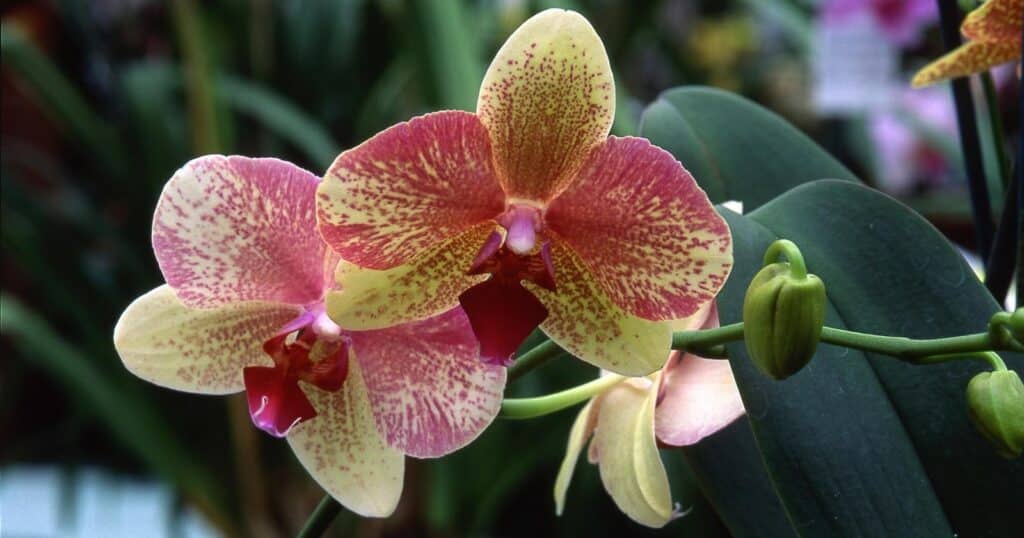
Scientific Name: Phalaenopsis spp.
- Plant Type: Annual
- Geographic Origin: Southeastern Asia
- Plant Size: 8 to 36 inches tall
- Sun Exposure: Bright shade
- Plant Zone: 10 to 12
Like some other species of orchids, Moth orchids can do well and even thrive in a water environment. If transplanting from soil, start by brushing away all the debris and then soaking in enough water to cover some, but not all, of the roots. For best results, aerial roots should have access to the air, and water should be distilled or boiled and cooled to remove chlorine whenever possible.
Paperwhite
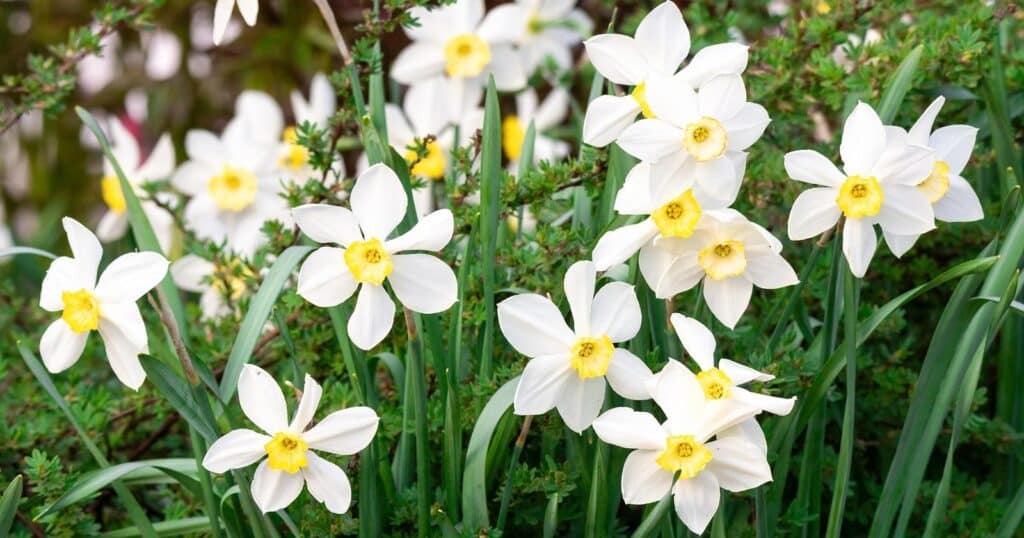
Scientific Name: Narcissus papyraceus
- Plant Type: Perennial
- Geographic Origin: Mediterranean
- Plant Size: 12 to 18 inches tall
- Sun Exposure: Full sun
- Plant Zone: 8 to 11
A relative of daffodils, the Paperwhite narcissus once started grows beautifully in water provided a 5% alcohol solution is added to the container, roughly seven parts water to 1 part alcohol. You can purchase special vases to help sprout the bulbs, or pebbles can be added to the bottom of the vase, which will help to keep the bulb up and avoid oversaturation.
Peace Lily
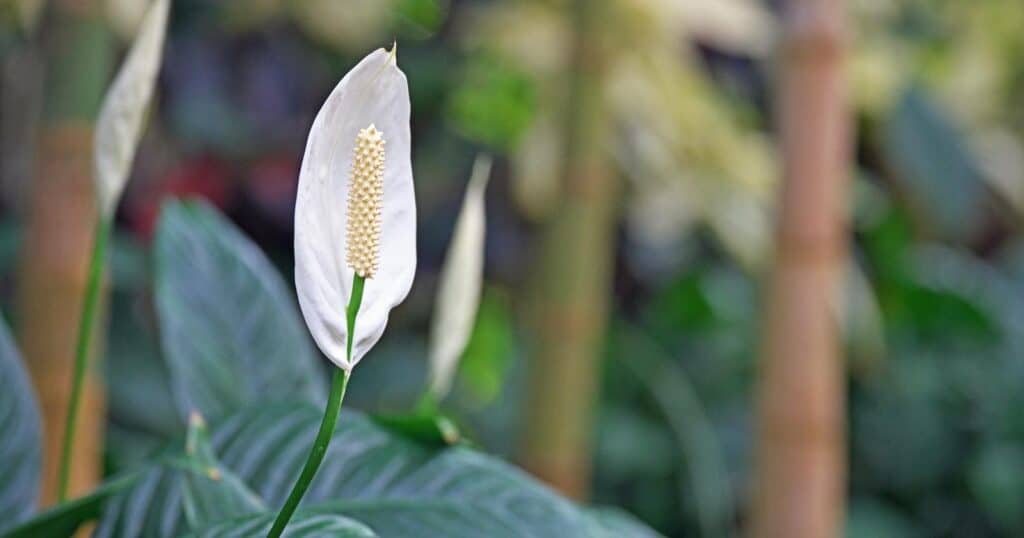
Scientific Name: Spathiphyllum
- Plant Type: Perennial
- Geographic Origin: South America
- Plant Size: 3 feet tall
- Sun Exposure: Indirect sunlight
- Plant Zone: 11 to 12
A peace lily is a beautiful plant to grow inside because the tropical blooms are breathtaking. The dark green leaves are stunning throughout the year, so finding a large glass vessel is a great way to showcase this plant. The root system will expand to fill the container and is just as gorgeous as the leaves and flowers.
You want to ensure that only the roots are in the water for this plant. The plant itself should stay above the water so the leaves and blooms won’t rot. You can add colorful glass pebbles or natural stones to the bottom of the vase to keep the plant elevated enough.
Philodendron
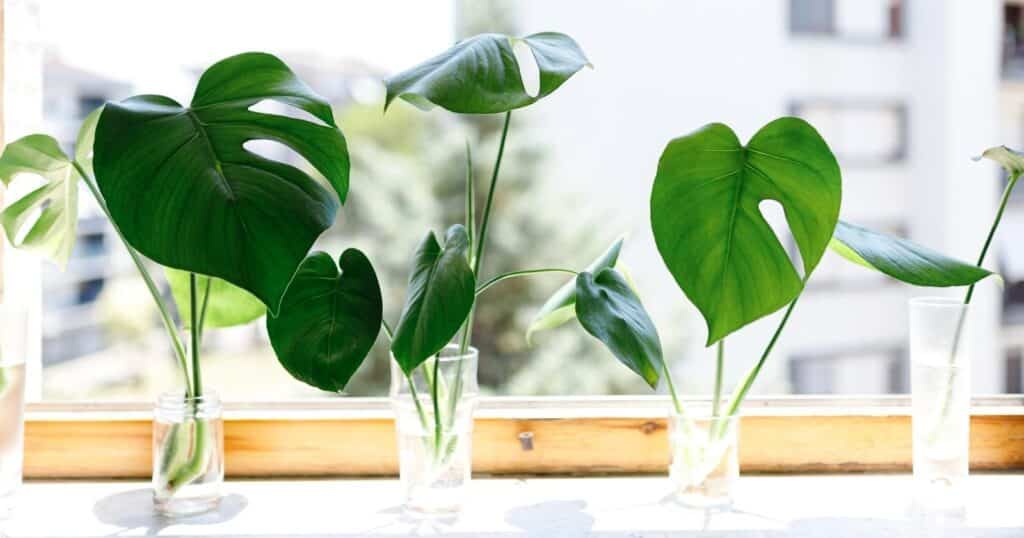
Scientific Name: Philodendron
- Plant Type: Perennial
- Geographic Origin: Amazon basin
- Plant Size: 1 to 20 feet tall
- Sun Exposure: Partial sunlight
- Plant Zone: 9 to 11
Philodendrons resemble pothos with their green stems and attractive leaves. These plants are nearly impossible to kill, so you can put a stem in water, position it anywhere in your house, and watch it grow.
Cut long stems off your existing plant and remove any lower leaves from the cutting. Put them in a jar of water — one by itself or several to give a fuller arrangement. The stems will continue growing, along with the leaves, so you might need to move them to a taller vase over time.
Pothos
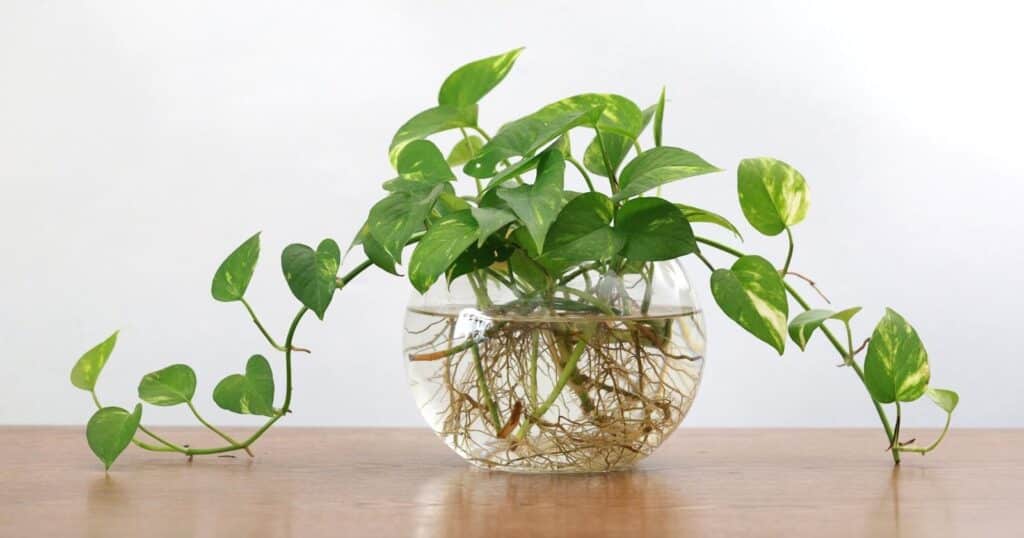
Scientific Name: Epipremnum aureum
- Plant Type: Perennial
- Geographic Origin: Southeast Asia
- Plant Size: 5 to 40 feet long, 3 to 6 feet wide
- Sun Exposure: Indirect sunlight
- Plant Zone: 9 to 11
Pothos is a popular houseplant because of how beautiful and low maintenance they are. You can quickly propagate them because the stems have nodes all over, producing new roots rapidly when you put them in water. You can cut longer stems to ensure they stay healthy in water without needing time to regenerate new leaves.
Once the pothos develops leaves, they can live in water for an extended time. You can have bundles of these plants growing around your house because they don’t need much sunlight. Pop a few springs in a glass of water and use them to brighten up the darker corners of your home.
Prayer Plant
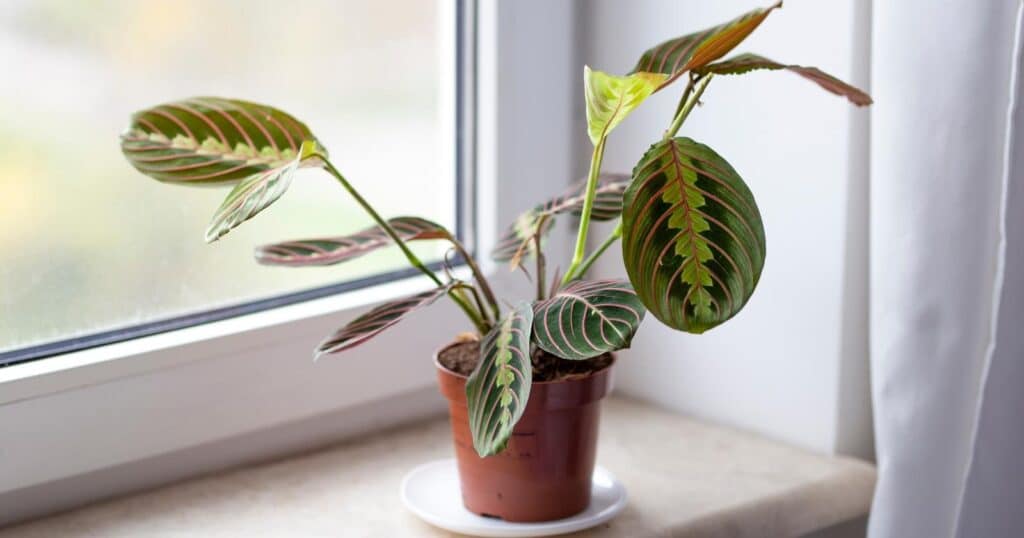
Scientific Name: Maranta leuconeura
- Plant Type: Perennial
- Geographic Origin: South America
- Plant Size: 1 to 3 feet tall
- Sun Exposure: Partial to full shade
- Plant Zone: 11 to 12
The prayer plant is a hardy, flowering perennial if grown outdoors, but it rarely flowers indoors. Its green leaves and red veins make it an attractive addition to the home in a lovely glass vase.
They can be grown in water from cuttings, or if the plant is left in water, it will continue its root growth and even grow new foliage. Older prayer plants can continue in water, but some will do better if transplanted into soil.
Purple Heart Plant
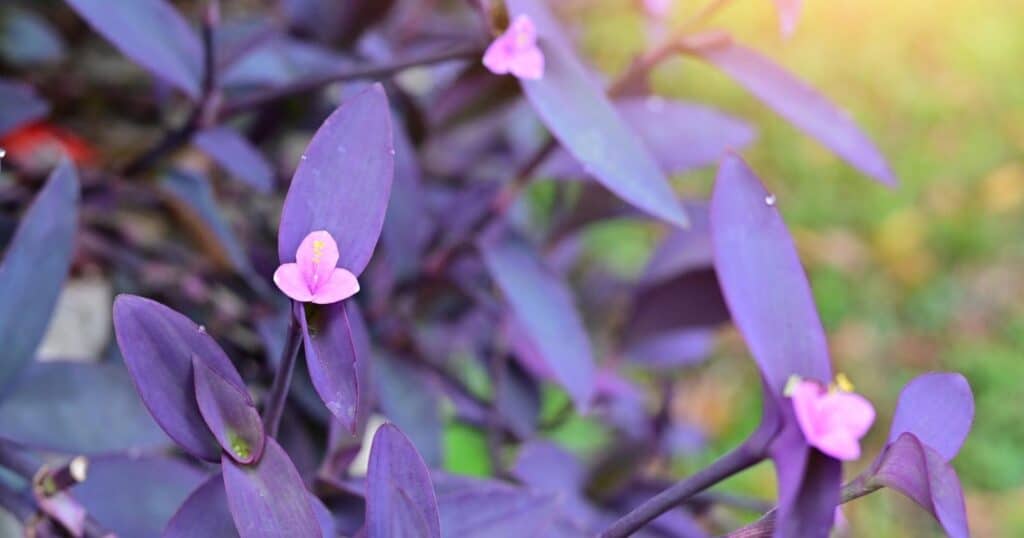
Scientific Name: Tradescantia pallida
- Plant Type: Perennial
- Geographic Origin: Mexico
- Plant Size: 8 to 12 inches tall, 16 inches wide
- Sun Exposure: Full sun
- Plant Zone: 7 to 10
There’s so much greenery on this list, but the purple heart plant will add a nice pop of color along with delicate flower blossoms. The leaves of this plant are purple, and you’ll keep them out of the water as you grow them indoors.
After getting indirect sunlight for a few weeks, you’ll notice roots growing. By late spring, you’ll see light purple flowers near the leaves.
Rubber Plant
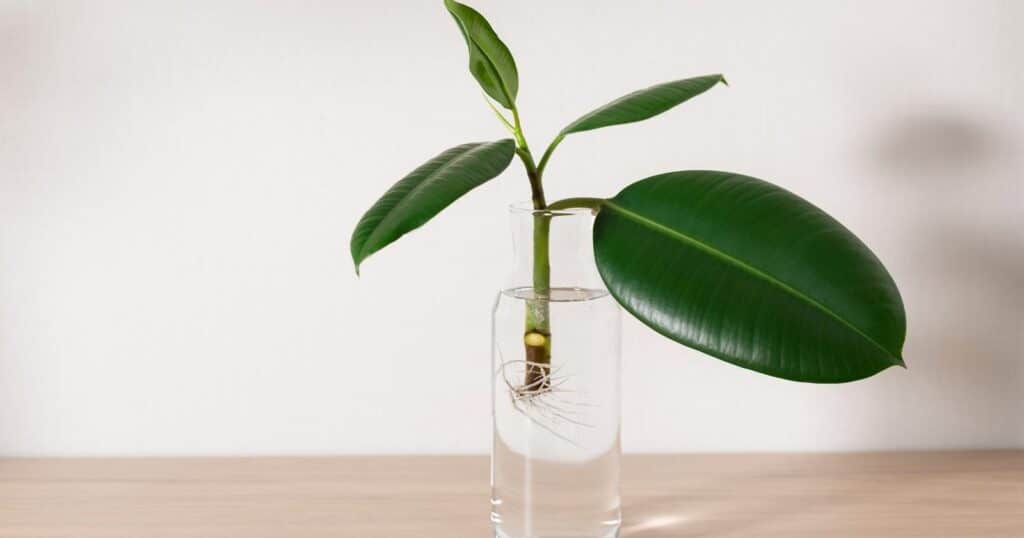
Scientific Name: Ficus elastica
- Plant Type: Annual
- Geographic Origin: Asia
- Plant Size: 5 to 10 feet
- Sun Exposure: Partial Shade
- Plant Zone: 10 to 12
With their large, waxy green leaves and strong frame, rubber plants can grow to be massive plants outdoors or sizeable companions indoors, even if grown solely in water.
They thrive in moderate to warm temperatures with proper humidity, and other than a support stick as the plant grows to prevent drooping, they’re pretty low upkeep. Take care when repotting full-grown rubber plants and provide some original potting media in the new container.
Snake Plant
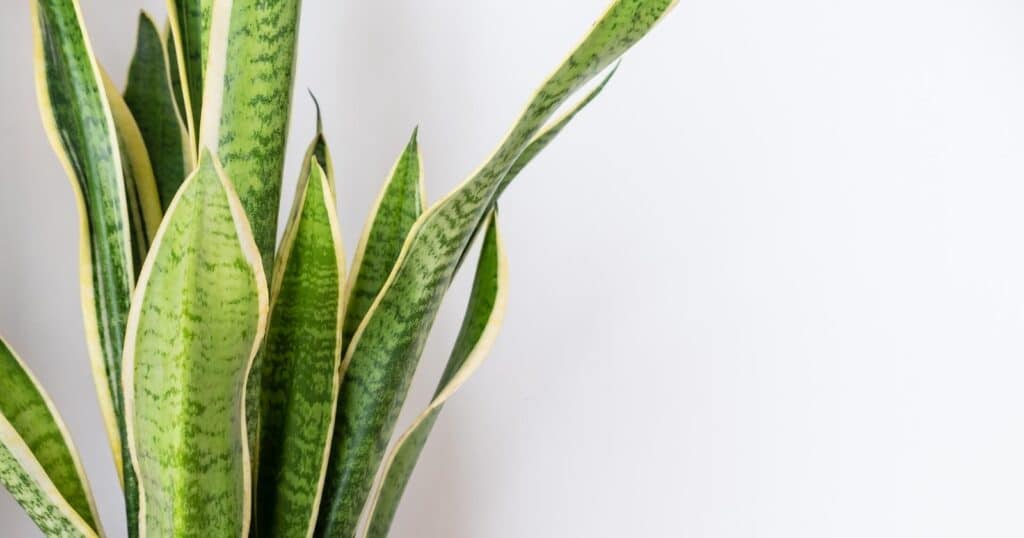
Scientific Name: Dracaena trifasciata
- Plant Type: Perennial
- Geographic Origin: Asia and Africa
- Plant Size: 8 to 12 feet tall, 6 inches to 3 feet wide
- Sun Exposure: Partial shade to full sun
- Plant Zone: 9 to 11
Renowned for its ability to clean air in homes, snake plants or Mother-in-Law’s Tongue can help benefit the environment while being easy to grow and maintain.
Take a cleanly cut leaf from a mature plant and stabilize it in a glass with toothpicks until roots begin to grow in one or two months. Once the leaf grows wide enough to support itself, change the water every 5-7 days or if it becomes discolored and keep it in a clear liquid with a quality liquid fertilizer.
Spider Plant
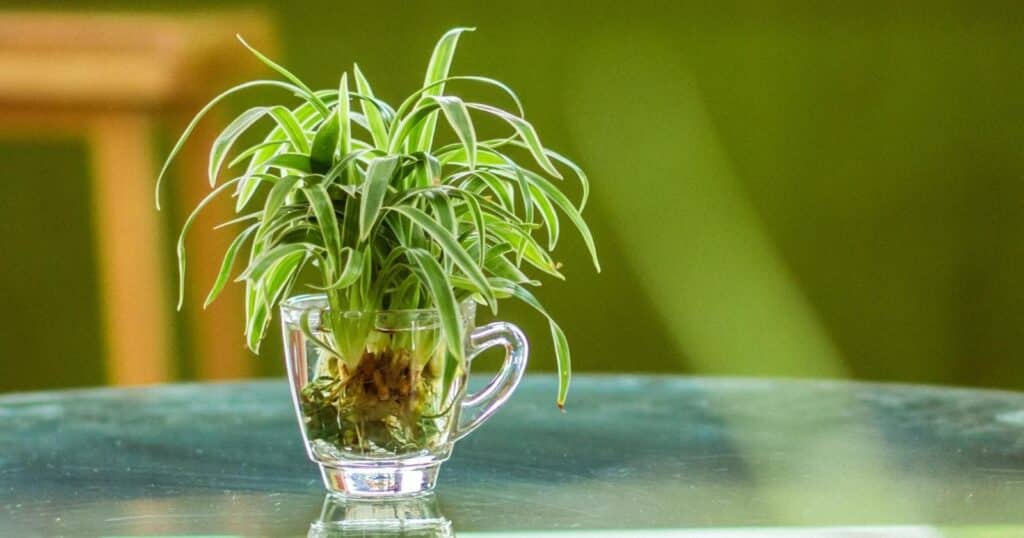
Scientific Name: Chlorophytum comosum
- Plant Type: Perennial
- Geographic Origin: South Africa, Asia, and Australia
- Plant Size: 12 to 15 inches tall
- Sun Exposure: Full to partial shade
- Plant Zone: 9 to 11
The striped leaves of a spider plant are interesting to add to your indoor garden. The spider plant almost does the propagating for you as the spiderettes grow from long stems, dangling from the mature plant. You can snip off the stem and put the plant in a glass of water.
Each spiderette should have its own jar to ensure it gets enough water and can let its roots grow freely. It’s best to use a vase that has a thin neck so that the plant itself stays above the water. The roots will rest in the water and grow down as far as they need to go. If you don’t have this type of jar, put the plant on plastic wrap and cut a hole for the roots to get to the water.
Swedish Ivy
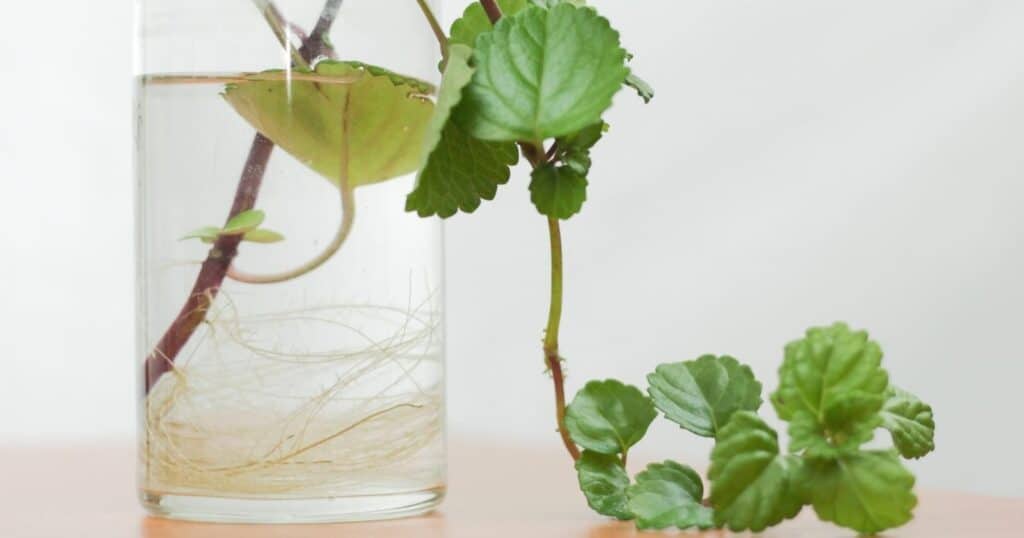
Scientific Name: Plectranthus verticillatus
- Plant Type: Annual
- Geographic Origin: Northern Australia
- Plant Size: 6 to 18 inches tall
- Sun Exposure: Partial to full sun
- Plant Zone: 9 to 10
Swedish Ivy’s name is a bit of a misnomer as it isn’t native to Sweden, it gained that name because of it’s popularity in the country and isn’t technically an ivy. It does, however, do well in hanging baskets and can climb like other ground cover plants.
These vigorous plants do well in water. Take a cutting, and with or without rooting hormone, expose one end with a crown of leaves at the other and place it in water with partial sunlight. Swedish ivy roots quickly and can be left in water or replanted in a loamy soil.
Ti Plant
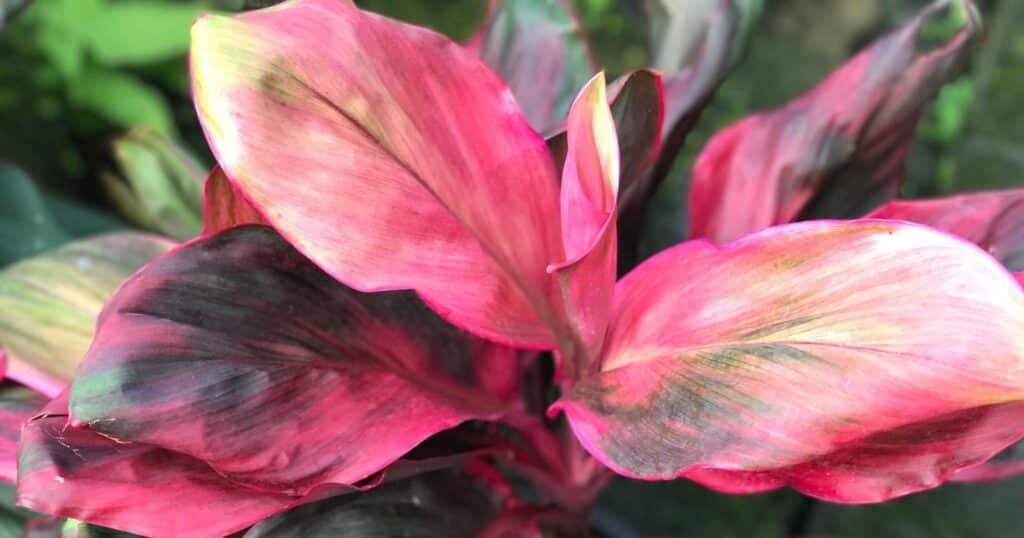
Scientific Name: Cordyline fruticosa
- Plant Type: Annual
- Geographic Origin: Asia, Australia, and some Pacific islands
- Plant Size: 9 to 10 feet tall
- Sun Exposure: Partial shade to partial sun
- Plant Zone: 10 to 12
The Ti plant can develop roots in only an inch of water provided its changed regularly to avoid any diseases or rot. Start with a piece of cane approximately 5 to 7 inches long with a clean-cut, and then place it in 1 inch of water.
Valentine Hoya
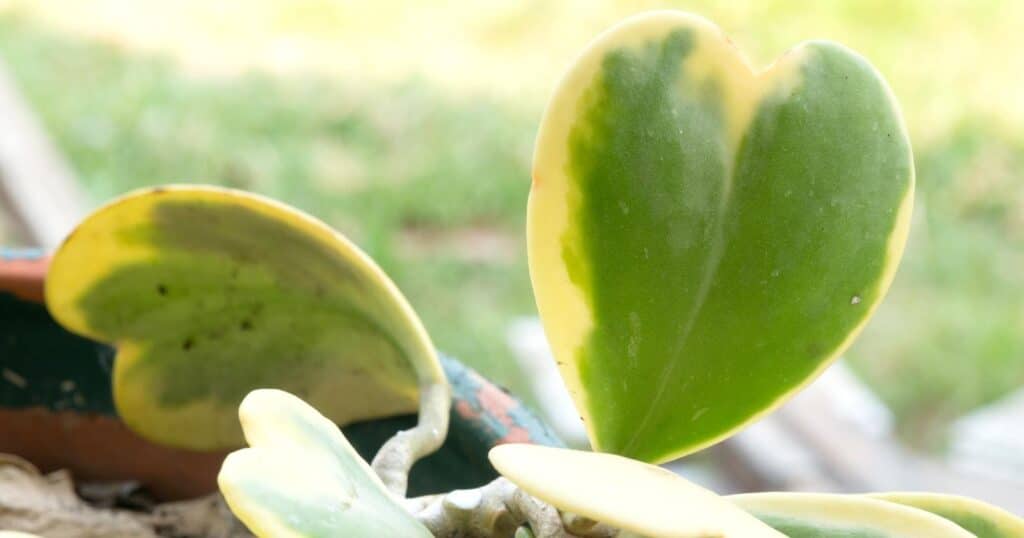
Scientific Name: Hoya kerrii
- Plant Type: Perennial
- Geographic Origin: Southeast Asia and Australia
- Plant Size: 5 inches tall, often 5 inches wide
- Sun Exposure: Partial shade
- Plant Zone: 10 to 11
Also known as the Sweetheart Hoya, it recently gained popularity because of it’s small size and relatively easy to care for. Left in a small container, the Valentine Hoya with its since leaf will stay small and maybe a bit boring for people who want a plant that grows and develops.
This perennial holds water exceptionally well and only needs to be watered about once a month. Thanks to its low-maintenance needs, it can be propagated in water and can survive and even thrive with liquid fertilizer.
Final Notes
When caring for houseplants that grow in water, make sure you continually top off the water in the container. The plant will take in some of the water, and the rest will evaporate into the air. Growing these houseplants in water is sure to brighten your indoor garden!

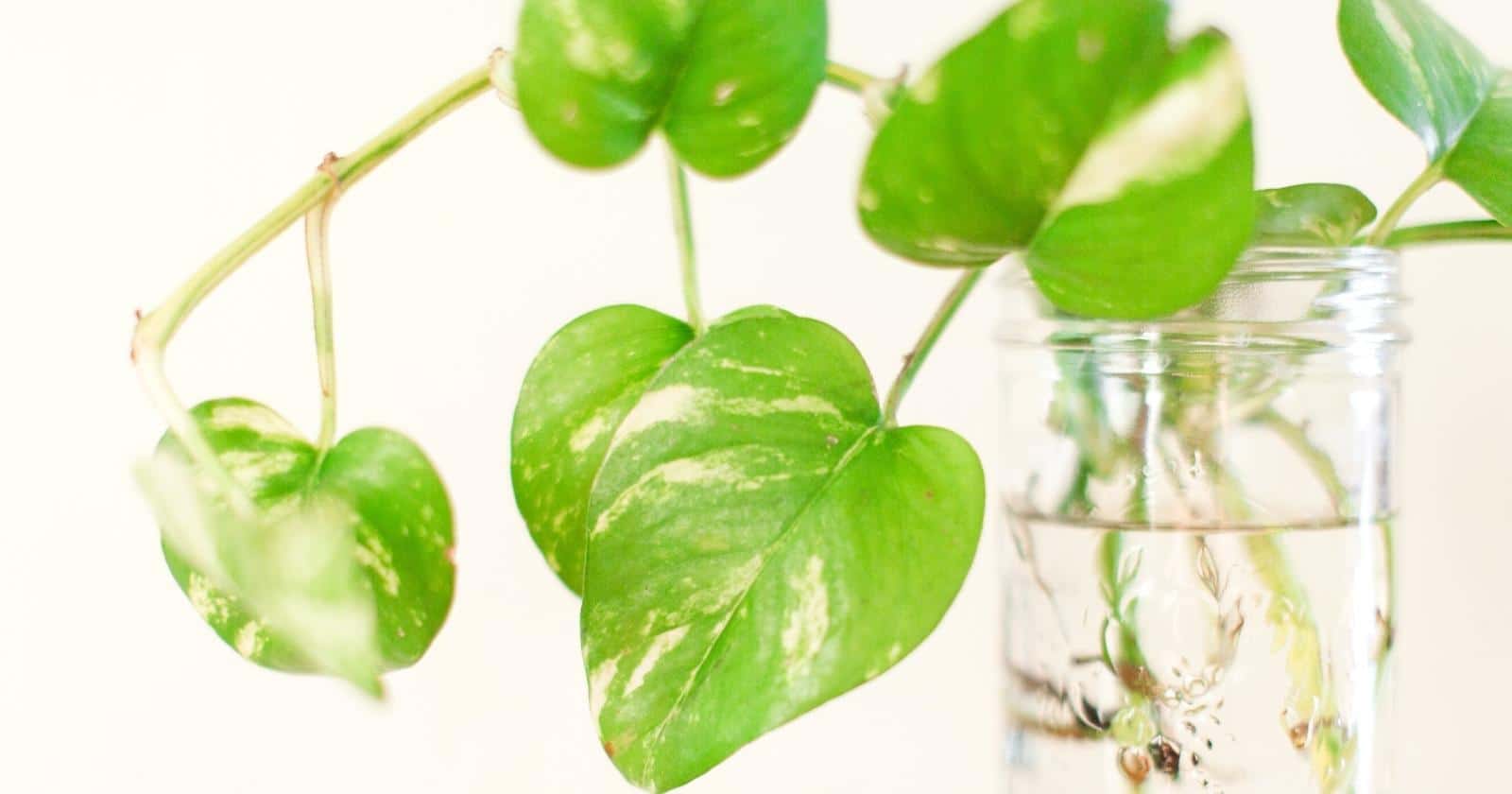
Leave a comment